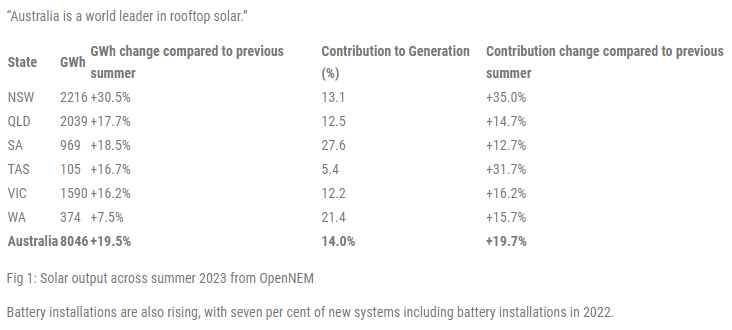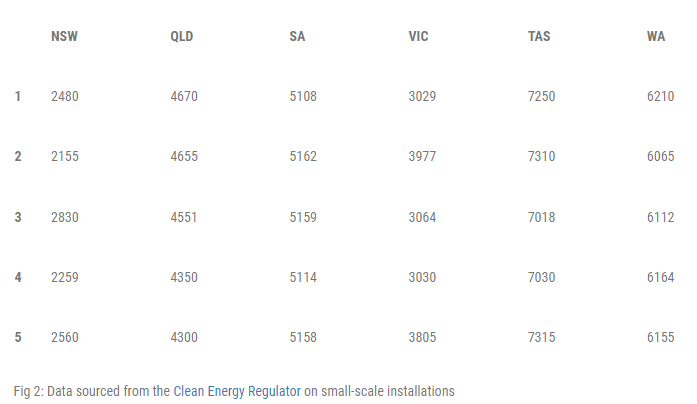
Rooftop solar provided 14 per cent of Australia’s electricity needs this summer and dispatched more energy to the grid than brown coal and all other renewable sources, including grid-scale wind farms and solar farms.
The Clean Energy Council shared the summer statistics, and highlighted the total output for rooftop solar across summer 2023 was 8046GWh – up by 19.5 per cent compared to summer 2022.
Energy bills have risen by between 15 and 20 per cent since mid-2022 sparking a surge in small-scale solar installations.
More than three million homes and businesses now keep costs down using rooftop solar. Rising power prices are reducing the projected time for newly installed systems to pay for themselves.
A state-by-state analysis of the summer performance tells another tale, with South Australia leading the way in rooftop solar but New South Wales being the most improved of all the states.
The Clean Energy Council has also produced a list of Australia’s top postcodes for rooftop solar, state by state.
In New South Wales, Lismore topped the rankings; in Queensland, the Bundaberg region led rooftop solar; in South Australia, it was Salisbury; in Victoria, it was Hoppers Crossing; in Tasmania, Blackstone Heights and in Western Australia, Mandurah.
Clean Energy Council Chief Executive, Kane Thornton, said the solar achievement was especially noteworthy, given there had been less sunshine than in an average year.
“There is no doubt with inflation and cost of living pressures, people are turning to rooftop solar in record numbers,” Mr Thornton said.
“Thousands of Australians are switching to rooftop solar and seeing their benefits to their hip pockets and the environment. In fact, payback periods for rooftop solar are now at near record-low levels, at 3.4 years for a 7kW system.
“We’re seeing a fundamental shift; consumers are becoming energy generators, making their own clean energy, reducing their bills and taking on the electricity companies.”
Mr Thornton said the figures measure only what enters the grid.
“Even more clean, low-cost generation was produced and used by households themselves, taking pressure off our strained system,” Mr Thornton said.

